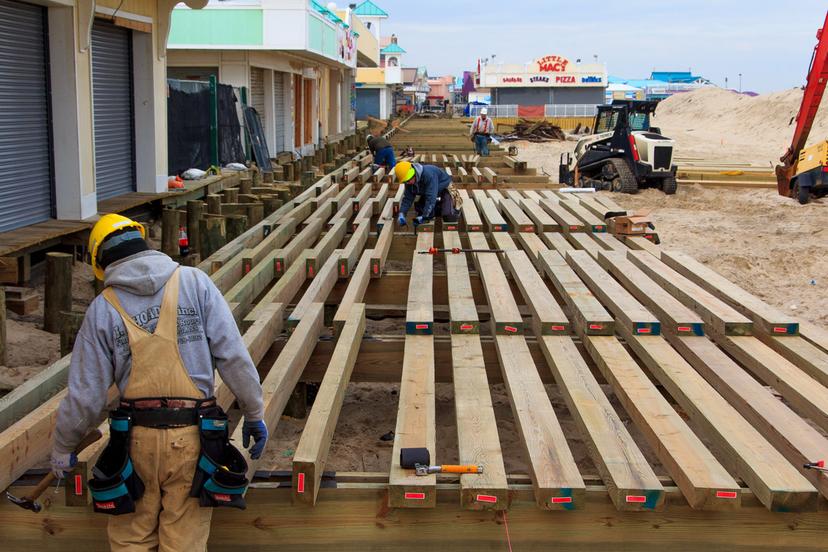Construction

Structure
The construction industry is one of the largest industries in the United States. According to the U.S. Department of Labor, it employed nearly 7.2 million workers as of May 2018. The research firm, IBISWorld, indicated that there were approximately 3.2 million construction companies in the United States in 2018.
Construction is a detailed and complex industry, dealing with all aspects of building a structure, whether it's a skyscraper or a highway. This includes clearing sites and developing structures. Construction also covers service equipment that, when installed, becomes an integral part of the structure, such as plumbing, heating, central air-conditioning, electrical wiring, lighting equipment, elevators, and escalators.
In general, the first step in construction involves creating the design for the building. Traditionally, the design was completed by a separate architectural firm, but due to the trend of the industry toward the design-build model, more construction firms are active in this sector. If the design-build model isn’t being used, the first step in construction is the bidding process. It is not true that the contractor who bids the lowest price is always awarded the contract. Bids are judged on several points: experience of the contractor, designs submitted for the project, proposed time schedule, recommendations from previous customers, and cost. The winning contractor then hires subcontractors to perform selected projects, such as laying the foundation, fireproofing the structure, and installing the ventilation system. After all of the tasks have been coordinated with the subcontractors, the structure is ready to be built.
Categories of Projects
Construction takes many forms, and its products vary widely in size, appearance, composition, character, and purpose. These products are divided into major groups or categories according to their principal characteristics, and each of these is further divided into subcategories. The categories apply to new construction as well as repair and renovation work.
The largest single category of construction is residential building construction, which includes structures ranging from small homes to huge housing developments.
Another major category is nonresidential building construction, or general building construction. It includes industrial buildings, such as plants and factories; commercial structures ranging from small stores to great skyscrapers; and institutional and other kinds of nonresidential structures, such as schools, churches, and hospitals. IBISWorld reported that, in 2019, there were 73,048 commercial building construction companies in the United States, employing 290,496 workers.
Highway and heavy construction is another principal category. Highway work embraces not only networks of interstate highways, but also bridges, local roads, and streets. Airport runway construction is largely done by highway contractors, since runways and highways involve much of the same methods, materials, machines, and skills. Typical heavy projects include dams, big bridges, tunnels, railroads, missile bases, refineries, and waterways such as the Panama Canal, the St. Lawrence Seaway, and river channels. Similar equipment and construction methods are employed for highway and heavy construction. Earthmoving, for example, may be done for a highway project or for an earth-filled dam.
Finally, municipal utilities construction encompasses the essential services for counties, towns, and cities. Such projects include sewage treatment plants, water purification projects, water and sewer lines, underground utilities, street resurfacing, park and playground construction, and sidewalk construction and maintenance.
Construction Classifications
Construction activity is divided into two broad classifications: private and public. Private construction is construction work performed for private owners, whether individuals, corporations, or other business firms, organizations, or institutions of a nongovernmental character. It is usually paid for out of private funds. Public construction is construction work performed for federal, state, or local agencies of government and usually paid for out of tax money, bonds, or other public funds. However, the governing distinction between private and public construction is the ownership of the project at the time of construction and not the source of funds used to pay for the project.
For most of the trades involved in construction, the workers do not start at the beginning of the building process and work until the building is complete. Workers come in for the portion of the job that involves them and then move on to other projects. So, an electrician comes in to wire a house and then moves on to another construction site. He or she may have to come back to do more electrical work, but it is not essential to have an electrician at a job site every day. Because workers come and go, it is important to have a project supervisor, or job foreman, who knows all the phases of the work being done. Project managers ensure that all materials and resources are ordered and arrive on time.
